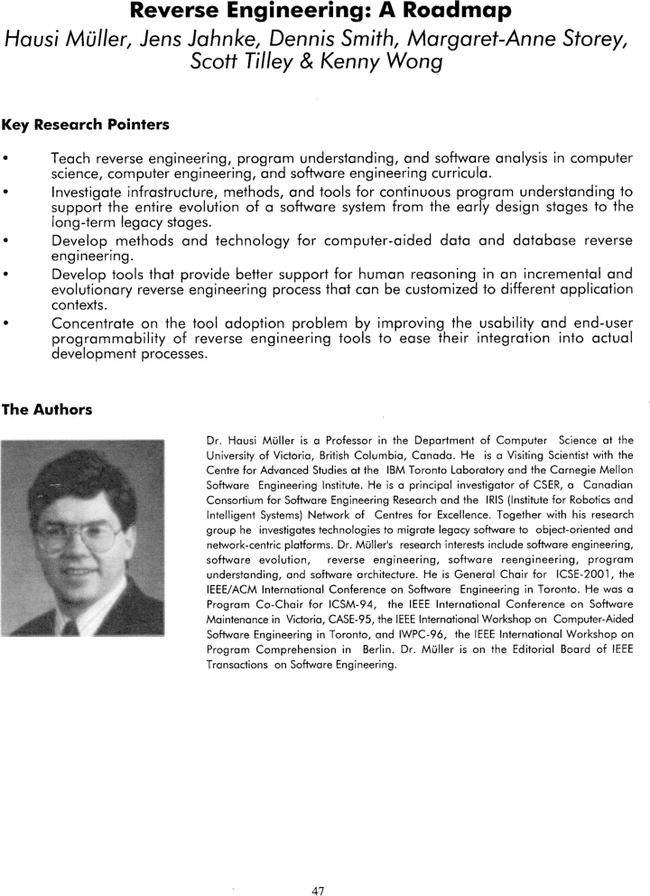Cited By
View all- Balde KPrasad LYadav R(2024)Visualizing Complexity: A Dynamic Approach to Reverse Engineering2024 International Conference on Advances in Computing Research on Science Engineering and Technology (ACROSET)10.1109/ACROSET62108.2024.10743279(1-7)Online publication date: 27-Sep-2024
- Chen LRothblum RTell RYogev E(2023)On Exponential-time Hypotheses, Derandomization, and Circuit Lower BoundsJournal of the ACM10.1145/359358170:4(1-62)Online publication date: 20-Apr-2023
- Zhang WZhang WStrüber DHebig R(2023)Manual Abstraction in the Wild: A Multiple-Case Study on OSS Systems’ Class Diagrams and Implementations2023 ACM/IEEE 26th International Conference on Model Driven Engineering Languages and Systems (MODELS)10.1109/MODELS58315.2023.00017(36-46)Online publication date: 1-Oct-2023
- Show More Cited By


